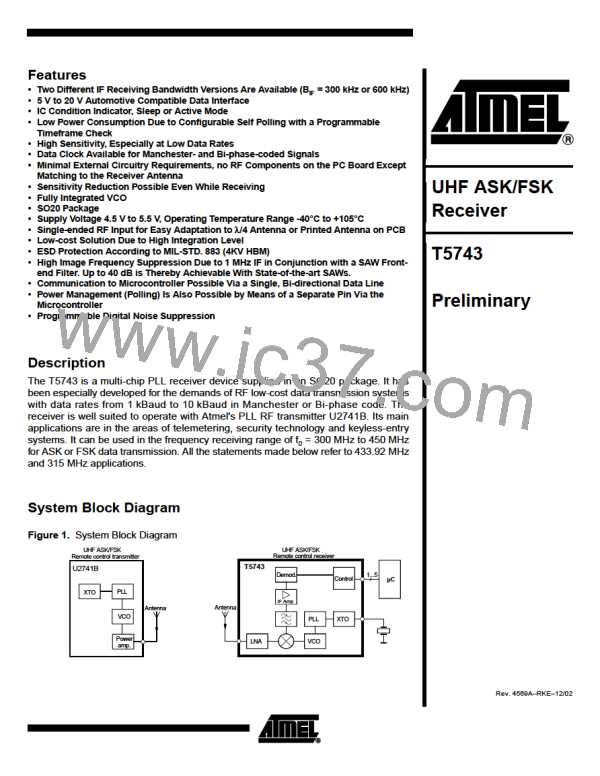T5743
I
Soff P TSleep + ISon P ꢃTStartup + TBit-checkꢄ
ISpoll = -------------------------------------------------------------------------------------------------------------
TSleep + TStartup + TBit-check
During TSleep and TStartup the receiver is not sensitive to a transmitter signal. To guaran-
tee the reception of a transmitted command the transmitter must start the telegram with
an adequate preburst. The required length of the preburst depends on the polling
parameters TSleep, TStartup, TBit-check and the start-up time of a connected microcontroller
(TStart,µC). Thus, TBit-check depends on the actual bit rate and the number of bits (NBit-check
to be tested.
)
The following formula indicates how to calculate the preburst length.
T
Preburst O TSleep + TStartup + TBit-check + TStart_µC
Sleep Mode
The length of period TSleep is defined by the 5-bit word Sleep of the OPMODE register,
the extension factor XSleep (according to Table 9), and the basic clock cycle TClk. It is
calculated to be:
T
Sleep = Sleep P XSleep P 1024 P TClk
In US- and European applications, the maximum value of TSleep is about 60 ms if XSleep
is set to 1. The time resolution is about 2 ms in that case. The sleep time can be
extended to almost half a second by setting XSleep to 8. XSleep can be set to 8 by bit
XSleepStd to 1.
According to Table 8, the highest register value of sleep sets the receiver into a perma-
nent sleep condition. The receiver remains in that condition until another value for Sleep
is programmed into the OPMODE register. This function is desirable where several
devices share a single data line and may also be used for microcontroller polling — via
Pin POLLING/_ON, the receiver can be switched on and off.
11
4569A–RKE–12/02

 ATMEL [ ATMEL ]
ATMEL [ ATMEL ]